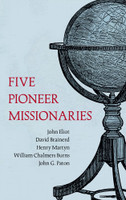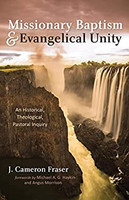
John G. Paton: The Autobiography of the Pioneer Missionary to the New Hebrides (Vanuatu)
Description
The autobiography of John G. Paton contains everything necessary to make it a missionary classic. Born into a Christian family near Dumfries, Scotland in 1824, Paton’s early years were marked by a struggle against poverty. He was self-educated, and the training ground for his life’s work was the slums of Glasgow where he laboured with success as a city missionary.
With ‘the wail of the perishing heathen in the South Seas’ continually sounding in his ears, he prepared himself to serve overseas and was ordained as a missionary to the New Hebrides in 1858. This group of thirty mountainous islands, so named by Captain Cook, with its unhealthy climate, was then inhabited by savages and cannibals. The first attempt to introduce Christianity to them resulted in John Williams and James Harris being clubbed to death within a few minutes of landing in 1839. The difficulties that confronted Paton were accentuated by the sudden death of his wife and child within months of their arrival.
Against the savagery and the superstition, despite the trials and tragedies, Paton persevered and witnessed the triumph of the gospel in two of these South Seas islands. His life is almost without parallel in missionary annals and his account of it is moving and gripping.
Contents
Preface
PART FIRST
Introductory Note
I. The Home Life
II. School and Early College Days
III. In Glasgow City Mission
IV. Foreign Mission Claims
V. The New Hebrides
VI. Life and Death on Tanna
VII. Mission Leaves from Tanna
VIII. More Mission Leaves from Tanna
IX. Deepening Shadows
X. Farewell Scenes
Concluding Note
PART SECOND
Preliminary Note
I. The Floating of the ‘Dayspring’
II. The Australian Aborigines
III. To Scotland and Back
IV. Concerning Friends and Foes
V. Settlement on Aniwa
VI. Face to Face with Heathenism
VII. The Light that Shineth More and More
VIII. Pen Portraits of Aniwans
IX. Second Visit to Britain
Closing Testimony
PART THIRD
Preliminary Note
I. Round the World for Jesus
II. The Homelands and the Islands
Farewell to the Reader
APPENDICES
A. A White-Souled Peasant
B. Notes on the New Hebrides
C. The Prayer of the Tannese
Index
Endorsement
"What sustained John Paton in his missionary zeal? No doubt he had a love for the people. He was certainly burdened for them and had compassion on their souls, knowing that without Christ they were certain to go to hell. As important as compassion is for those who do not know God, I suggest this will not sustain a missionary zeal, whether it be for missionaries serving on the field or for Christians in western churches who pray and support various missionaries. Something more is needed…Only a zeal for the true and living God to receive his due, to receive the glory and commitment in a local church."
—Allen M. Baker
About the Author
Born into a Christian family near Dumfries in 1824, John Gibson Paton’s early years were marked by a struggle against poverty. He was self-educated, and the training ground for his life’s work was the slums of Glasgow where he laboured with success as a city missionary. With ‘the wail of the perishing heathen in the South Seas’ continually sounding in his ears, he prepared himself to serve overseas and was ordained as a missionary to the New Hebrides in 1858.
The difficulties that confronted Paton were accentuated by the sudden death of his wife and child within months of their arrival.
Paton re-married (Margaret Whitecross) during furlough in Edinburgh in 1864, and on their return to the South Seas in 1866 he and Maggie established a new mission station on Aniwa Island.
Paton died at the age of 82 in January 1907 at Canterbury, Victoria, Australia, Maggie having preceded him to glory nearly two years earlier.





